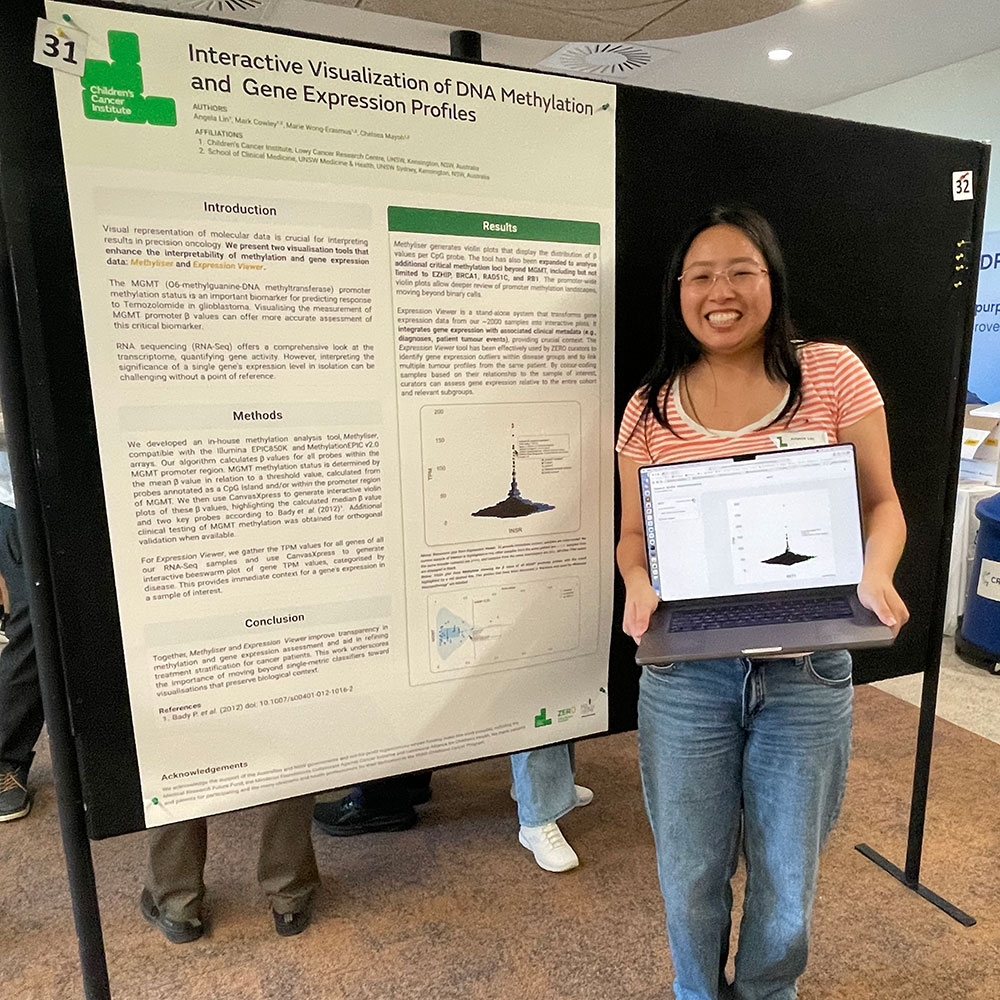Findings reported by our researchers in the International Journal of Cancer show that a drug called CBL0137 is highly effective against an aggressive form of leukaemia called MLL-rearranged leukaemia, which has a particularly high incidence in infant leukaemia.
Better therapies urgently needed
About 10% of acute leukaemias have a chromosomal change involving a gene called MLL. This type of leukaemia, called MLL-rearranged (MLL-r) leukaemia, is highly aggressive and resistant to therapy, and has the highest incidence in infants younger than one year, with 80% of infant acute lymphoblastic leukaemia patients suffering from this disease.
While overall survival rates for childhood leukaemia are approaching 90%, the survival rate for infant MLL-r leukaemia is less than 50%. Those who do survive are often left with life-long side effects from multiple rounds of intensive chemotherapy. So there’s an urgent need for a novel treatment, one that’s safe and potent and enables the current doses of chemotherapy to be reduced.
CBL0137 is effective against a range of cancers
CBL0137 is a novel anticancer drug developed by our long-term collaborators at Cleveland BioLabs, USA. It acts in several different ways to kill cancer cells. Importantly, it does this without damaging DNA, unlike many chemotherapy drugs.
CBL0137 has been found to be effective against several different types of cancer, including glioblastoma, renal cell carcinoma, melanoma and small cell lung cancer. A team from our labs showed that it is also effective against the childhood cancer neuroblastoma.
CBL0137 and MLL-r leukaemia
This latest research examined the ability of CBL0137 to delay the progression of infant MLL-r leukaemia, either by itself, or when combined with chemotherapy. The results indicate that CBL0137 alone has profound anti-cancer activity against multiple preclinical models of MLL-r leukaemia.
“CBL0137 is a compelling compound warranting further investigation as a candidate drug in the treatment of MLL-r leukaemia.”
What’s more, CBL0137 also increases the effectiveness of the chemotherapy drugs used to treat infant MLL-r leukaemia. This is important, because experience has shown that a cocktail of drugs, not one drug alone, is needed to cure leukaemia. As CBL0137 makes the current drug cocktail more effective, if it’s added to the mix, it should be possible to decrease the doses of the other drugs. This would reduce their toxic side effects.
Lead author of the research article, Dr Klaartje Somers, thinks that CBL0137 holds particular promise for MLL-r leukaemia.
“Survival rates of infants suffering from this disease have not increased in decades. MLL-r leukaemia occurs as many different subtypes, depending on the particular chromosomal rearrangement in each patient’s cells. And it is thought that this makes it difficult to identify one therapeutic approach that benefits all patients,” said Dr Somers.
“CBL0137 however was effective against all the different MLL-r leukaemia cells we tested, and enhanced the effects of chemotherapies against those cells that were highly resistant to currently used therapies.
“In light of this result, we think that CBL0137 is a compelling compound warranting further investigation as a candidate drug in the treatment of MLL-r leukaemia,” she concluded.
Clinical Trials of CBL0137
CBL0137 is currently being tested in early-phase clinical trials in adults with solid tumours (NCT01905228) and with haematological malignancies (NCT02931110).
Following completion of these adult trials, an Australian Phase I clinical trial will open for all refractory childhood solid and haematological cancers, to be conducted jointly with the Children’s Oncology Group (COG), Philadelphia, USA.
Read the research article.
Top image: Dr Klaartje Somers (left) discusses the findings of the study















